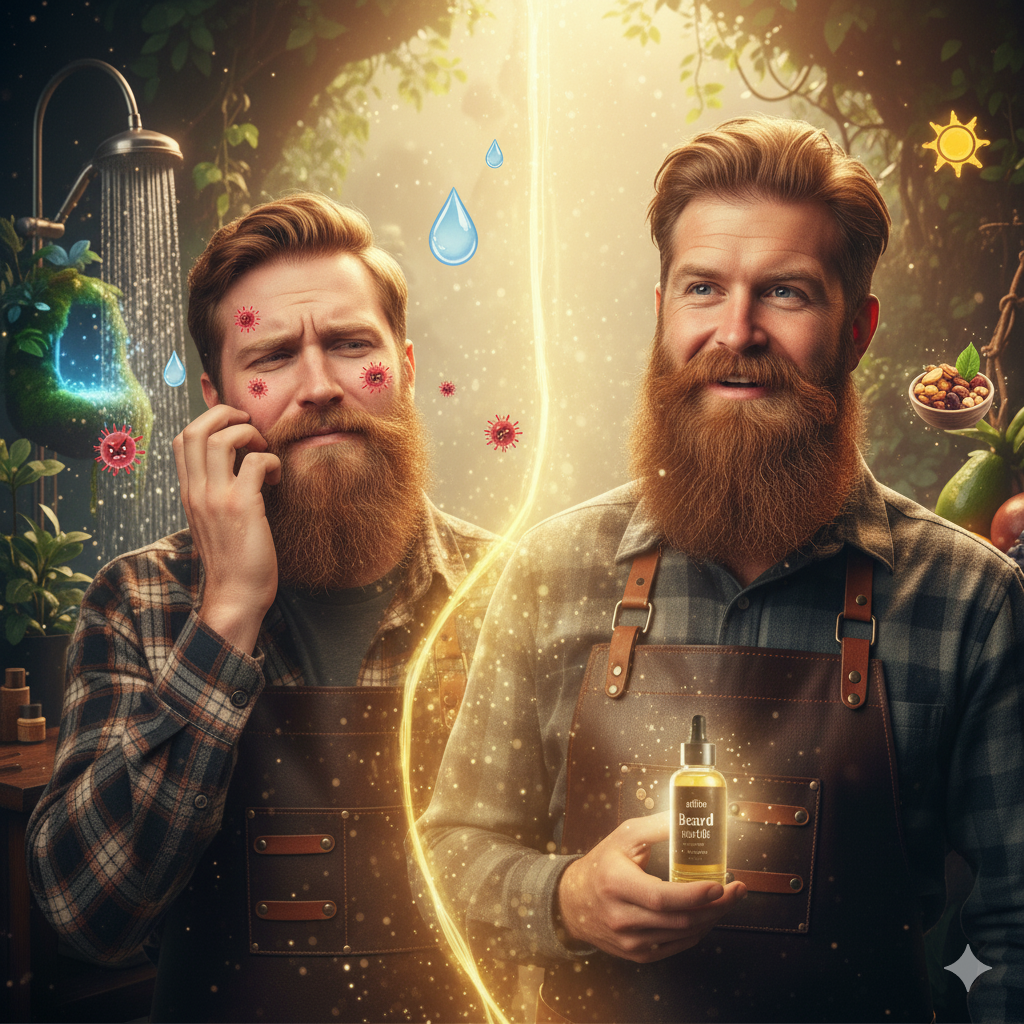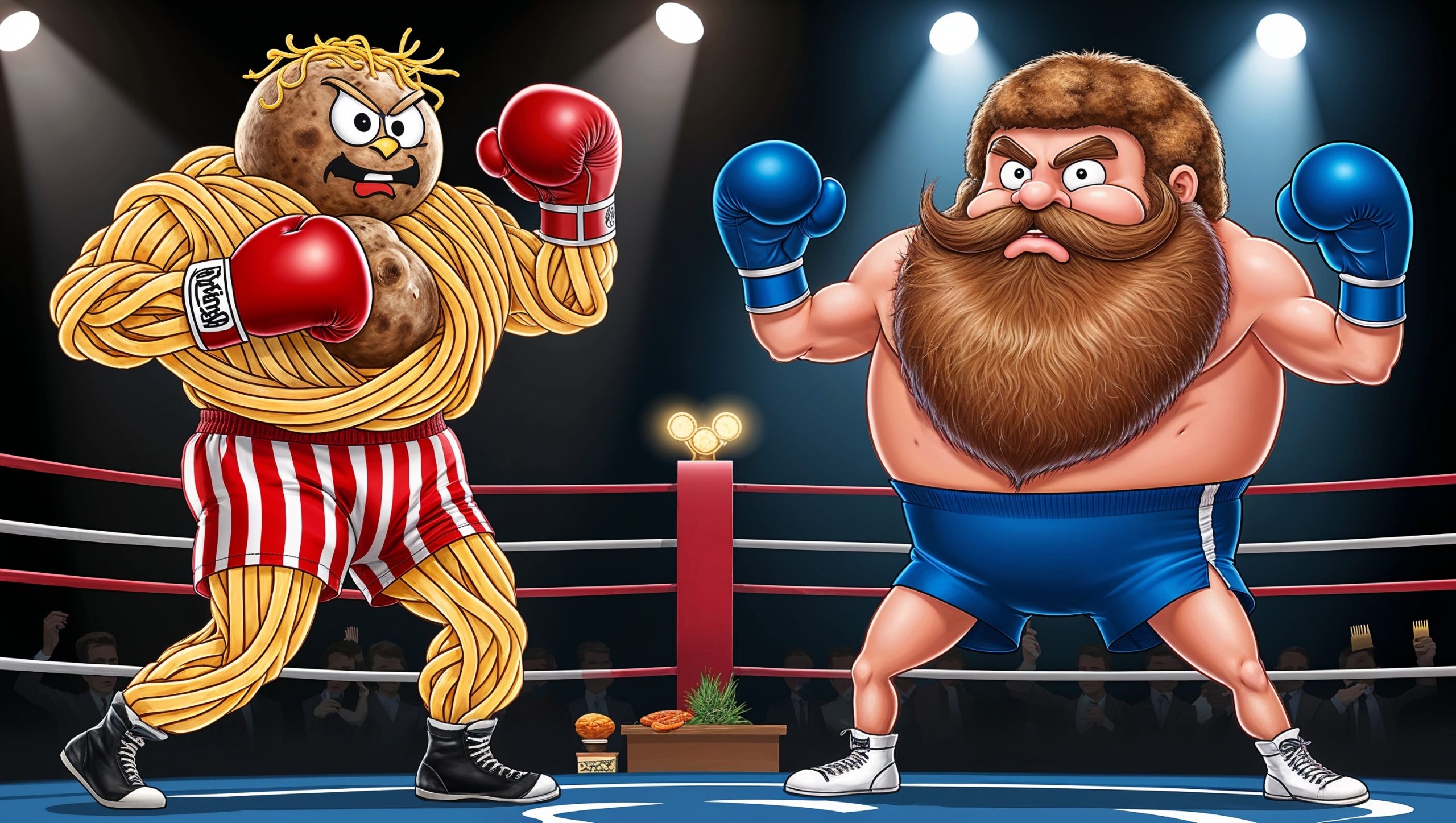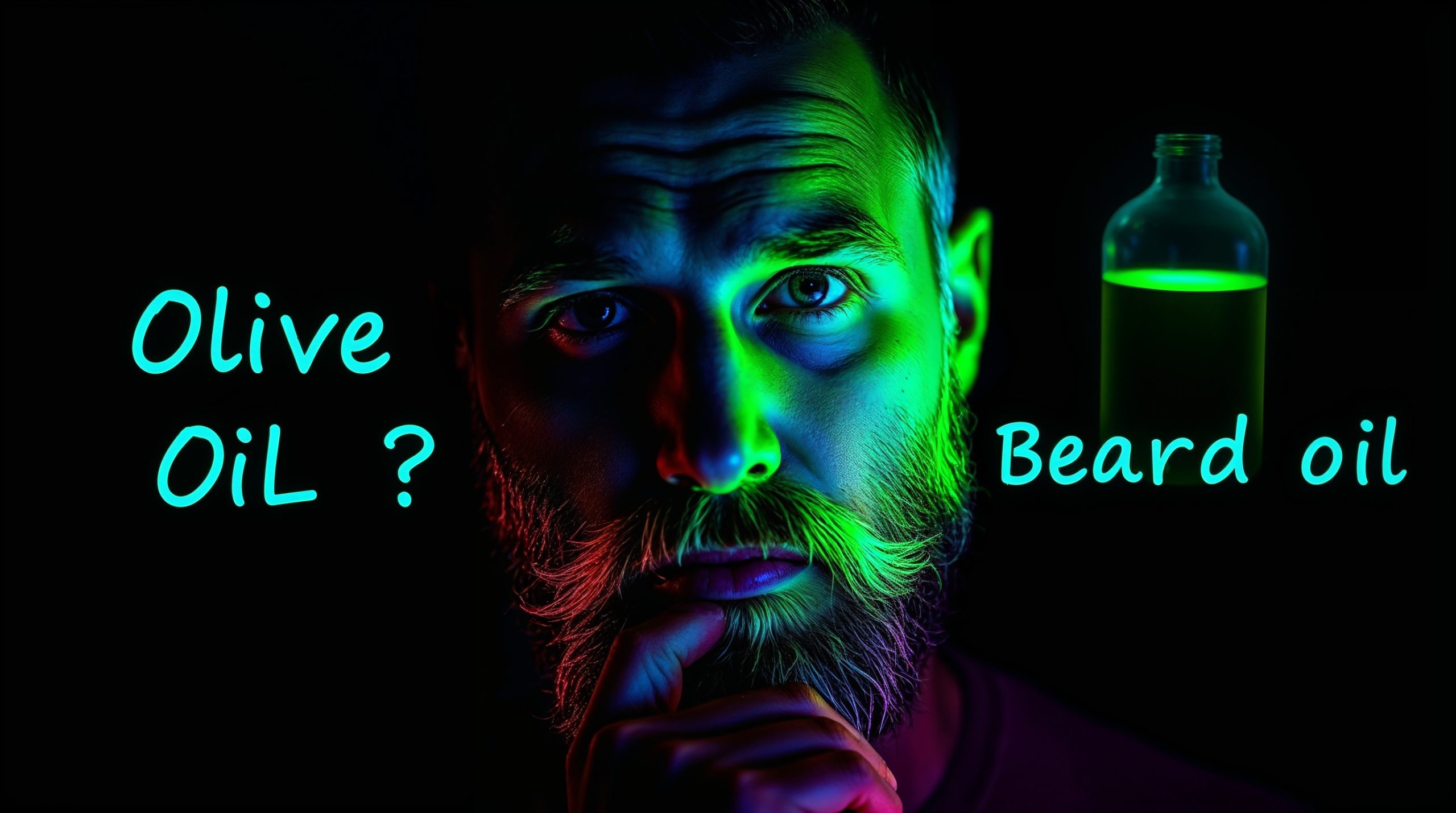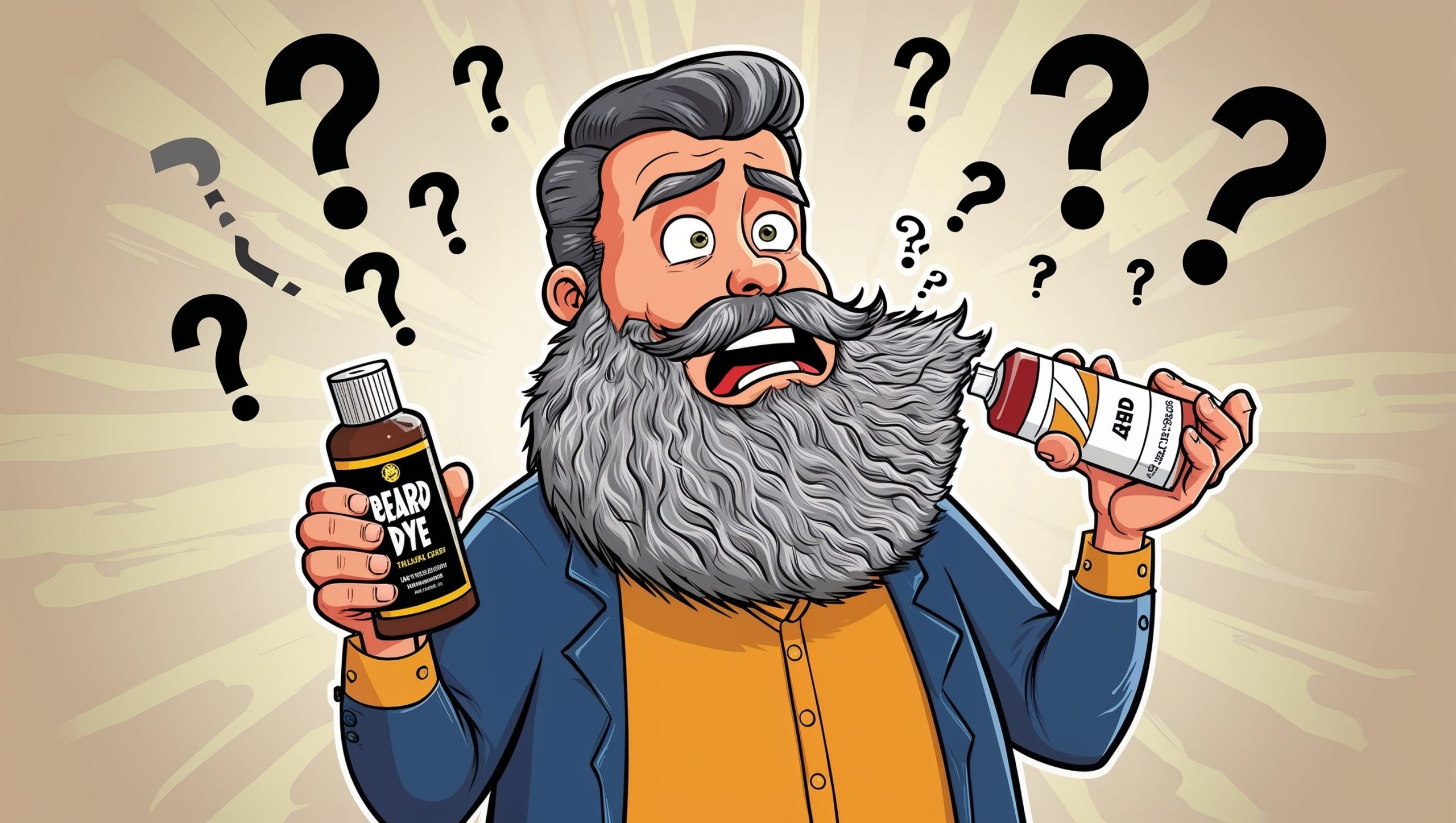
Introduction: The Universal Struggle and Your Roadmap to Relief
Persistent beard itch, or pruritus barbae, is arguably the single most common frustration experienced by men across the 18 to 70 age range in the US and Canada who choose to cultivate facial hair.1 Far from being a minor annoyance, unrelenting itch can lead to reduced confidence, significant irritation, and often causes men to abandon their beard growth goals altogether.2 The struggle stems from complex physiological, environmental, and behavioral factors that must be addressed systematically. Simply scratching the itch provides momentary satisfaction but exacerbates the problem, leading to micro-abrasions and potential secondary infection.3
This expert report moves beyond common folklore and quick fixes to deliver a scientific, structured framework required to understand how to stop beard itch for good. The solution involves a meticulous, three-pronged approach: identifying the specific root cause, establishing a superior daily grooming routine, and making critical lifestyle adjustments. The analysis presented here details the physiological and clinical origins of irritation, provides a step-by-step grooming protocol, introduces targeted conditioning treatments, and discusses advanced medical interventions when home care is insufficient. By implementing these practices, men can transform their experience from persistent discomfort to effortless maintenance.
Understanding the Enemy: Why Does My Beard Itch? The Root Causes of Irritation
To successfully determine how to stop beard itch, an accurate self-diagnosis is necessary. Beard irritation is not a singular issue; it is a symptom with various underlying causes. These causes can be broadly categorized into mechanical trauma (new growth), hydration deficiency (dryness), and clinical/infectious conditions.

The Inevitable Stage: New Growth and Sharp Edges
Most men experience a short but intense period of itching when they first start growing a beard.2 This initial discomfort is a direct result of the hair structure. When facial hair is newly grown or trimmed, the individual hairs possess sharp, abrasive tips. For men with coarse or tightly curled hair, this problem is magnified. As these short, sharp hairs curl back toward the skin, they pierce the epidermis, leading to inflammation—a condition often termed pseudofolliculitis barbae, commonly known as razor bumps.3
This mechanical injury signals the body to initiate an inflammatory response, resulting in redness and uncomfortable itchiness. The condition tends to resolve itself as the beard grows longer and the hair advances beyond the follicle, allowing the hair tips to soften and become less irritating.3 The initial focus during this stage should not be on deep cleaning, but rather on immediate lubrication and softening. Since preventing growth is not the goal, the most effective solution is to increase the pliability and lubrication of the hair shaft from day one. Coating the sharp keratin edges with moisturizing oils immediately reduces the mechanical trauma caused by the hair tips rubbing and poking the skin, thus offering immediate relief.
The Silent Culprit: Chronic Dryness and Dehydration
The most frequent cause of persistent, long-term beard itch is chronic dryness of the underlying skin.5 As the beard grows longer, the facial hairs naturally wick away the skin’s natural protective oils, known as sebum, faster than the skin can replenish them.1 This results in chronically parched skin and brittle facial hair. The dryness leads to rapid skin cell turnover, manifesting as dry, flaky particles under the beard, a condition colloquially known as “beardruff”.7
The beard itself acts as an extensive trap, accumulating sweat, food residue, environmental particles, and dead skin cells.5 This accumulating debris exacerbates the irritation and creates an ideal environment for bacterial buildup.5 Without constant external hydration, the low-level, perpetual itch from dehydration makes the beard feel rough and unmanageable.5
A commonly overlooked factor that accelerates oil depletion is water quality. Hard water, rich in dissolved calcium and magnesium minerals, significantly impacts beard health. These minerals bind to the protein structures of the facial hair, stripping them of their natural oils and leading to dryness and brittleness.8 Furthermore, mineral deposits from hard water accumulate on the skin, contributing to clogged pores and irritation. This buildup compromises the skin’s natural barrier, reduces light reflection (causing a dull appearance), and creates a physical barrier that prevents moisturizing products, such as beard oil, from effectively reaching the dry underlying skin.8 For many individuals struggling with persistent irritation, the answer to how to stop beard itch starts not with product application, but with mitigating this environmental stressor.
Clinical Conditions: When Beard Itch is a Medical Issue
In cases where irritation is severe, painful, or accompanied by specific symptoms, the itch may stem from a clinical skin condition requiring professional medical attention.3
Folliculitis is an infection of the hair follicle, often bacterial or fungal. Symptoms range from superficial, pus-filled bumps that resemble acne, to painful, interconnected, pus-filled clusters beneath the skin known as carbuncles.4 Unlike the slight irritation caused by dry skin, Folliculitis requires targeted antibacterial or antifungal treatment.3 If the reader attempts to treat this condition solely with moisturizing oil, they risk trapping the infectious agents and potentially worsening the condition.
Seborrheic Dermatitis, similar to common scalp dandruff, is another major cause. It is characterized by inflammation, redness, and oily, yellowish scaling. This condition is often tied to an inflammatory response combined with the overgrowth of a naturally occurring yeast on the skin.3
A crucial differentiation must be made between simple dryness and a true infection. The presence of pus, significant pain, tenderness, or persistent large bumps that do not respond to a basic, moisturizing grooming routine (7 to 10 days) are clear indicators that the problem has evolved from a cosmetic issue to a medical one, demanding consultation with a dermatologist.4
Table 1 provides a quick triage guide for recognizing the most common causes of beard itch and the appropriate corresponding actions.
Table 1: Causes, Symptoms, and Actionable Solutions for Persistent Beard Itch (Triage Guide)
| Primary Cause | Symptoms | Immediate Action (Home Care) | Advanced Treatment | Relevant Citation |
| New Growth / Pseudofolliculitis Barbae | Sharp, pricking itch; small, inflamed bumps. | Daily application of softening beard oil and gentle combing/brushing. | Glycolic acid wash/exfoliant | 3 |
| Dry Skin / Dehydration | Flakiness (beardruff), dull hair, constant low-level itch. | Daily hydration: high-quality beard oil (Jojoba/Argan) and increased water intake. | Specialized moisturizing balms or creams. | 5 |
| Folliculitis / Infection | Red, tender, pus-filled bumps (boils/carbuncles). | Gentle cleansing; immediate consultation with a dermatologist. | Topical antibiotics (Mupirocin) or oral antifungals | 3 |
| Seborrheic Dermatitis (Fungal/Dandruff) | Oily, yellowish flakes; intense irritation, redness, scaling. | Use dedicated, anti-fungal beard wash 3-5 times weekly. | Ketoconazole or prescription corticosteroid creams | 3 |
Foundational Grooming: The Daily Routine to Stop Beard Itch from Starting
An effective and reliable strategy for how to stop beard itch requires commitment to a consistent, tailored grooming routine. The preventative measures of cleaning, conditioning, and combing are essential for long-term comfort.
Selecting the Right Cleanser: Dedicated Beard Wash vs. Shampoo
A common pitfall is using regular hair shampoo or body soap on the beard. Standard shampoos are formulated with sulfates and harsh detergents optimized for the scalp, which typically has higher oil production.6 When used on the face, these products strip the essential natural oils from the facial hair and the underlying skin, severely accelerating dryness, flaking, and irritation.6
The solution involves switching to a beard-specific wash. These products are carefully formulated to gently clean the typically coarse facial hair and the sensitive skin underneath without compromising the vital sebum layer.6 The frequency of washing must be customized based on skin type and environment. Individuals with dry or sensitive skin should limit washing to 2–3 times a week to prevent excessive stripping of oils. Conversely, men with oily skin or those who work in dirty environments may require a more frequent routine, perhaps 4–5 washes weekly, to manage excess accumulation of dirt and oil.9 The required frequency is highly variable; an individual living in a humid climate with high levels of physical activity may need to wash more often than someone in a dry, sedentary environment. Over-washing, however, remains a common mistake that leads to dryness, frizz, and eventual split ends.9 Adopting a dynamic washing schedule based on daily activity and climate conditions is critical to maintaining an optimal skin barrier.
Mastering the Cleanse and Rinse Technique
Proper technique ensures the cleanser is effective without leaving irritating residue. Begin by dampening the beard with warm water. Warm water helps open the pores and allows the specialized beard shampoo to penetrate deeply to the skin level, ensuring that accumulated debris and bacteria are lifted.9 A small amount of beard wash should be thoroughly massaged into the hair and the underlying skin, ensuring that the cleansing action reaches the roots to eliminate oils, dirt, and buildup.9
The rinsing process is just as critical as the cleaning. Residue left behind from shampoo is a frequent and often unrecognized source of dryness and irritation.3 The beard should be rinsed exceptionally well, using cool or lukewarm water. The use of cooler water helps to close the pores and the hair cuticles, which locks in moisture and protects the hair structure.9 Finally, the beard must be dried gently. Patting the beard dry with a soft towel is recommended; aggressive rubbing creates friction on the sensitive skin, causes frizz, and can lead to structural damage in the hair shaft, exacerbating the itch cycle.9
The Essential Tool: Combing and Brushing for Skin Health
Regular combing and brushing are non-negotiable elements of an itch-prevention routine. This practice serves multiple functions beyond simple aesthetics: it removes tangles and knots, straightens unruly hairs, and, most importantly, provides crucial mechanical exfoliation.5 Daily combing helps remove dead skin cells and accumulated debris before they can clog the follicles or contribute to localized irritation and beardruff.5
Furthermore, the comb or brush is a vital delivery mechanism for moisturizing products. When used after applying oil or balm, the teeth or bristles ensure that the nourishing product is pushed past the hair and reaches the deep layers of the skin below, providing comprehensive conditioning where the irritation originates.1 This daily ritual provides nourishment at the root, softens the sharp edges of the hair (especially in shorter beards), and prepares the beard for the subsequent moisturizing step.
Targeted Solutions: Using Beard Oil and Conditioning to Eliminate Chronic Beard Itch

Once the foundation of a clean beard is established, the key to lasting comfort lies in daily, targeted hydration. Beard oil is universally recognized as the fastest and most effective solution for reducing flakes and itchiness, simultaneously softening the hair and enhancing its health and shine.1
The Chemistry of Relief: Carrier Oils for Sensitive Skin
Beard oils are typically composed of carrier oils, which provide the bulk of the moisturizing benefit, and often include small amounts of essential oils for added therapeutic or aromatic properties. The most effective carrier oils are those that closely mimic the natural oils produced by human skin (sebum), ensuring high compatibility and minimizing the risk of irritation.
Jojoba Oil is widely regarded as superior because its molecular structure is nearly identical to that of natural sebum.1 This compatibility allows it to effectively replace the moisture stripped away by cleansing or environmental factors, making it an excellent choice for sensitive skin.7 Argan Oil is another powerful ingredient, rich in Vitamin E and antioxidants. It provides superior conditioning, softening coarse hair, and actively soothing the underlying epidermis, which is vital for repairing the skin barrier.1
For managing specific conditions like beardruff or minor irritation, certain essential oils can be beneficial. Tea Tree and Lavender oils possess cleansing and soothing properties that help combat dryness and flakiness.7 Cedarwood and Eucalyptus are known to help balance natural oil production and calm severely irritated skin.7
Table 2: Key Ingredients in Anti-Itch Beard Oils (Chemical Functionality)
| Ingredient | Classification | Primary Benefit | Mechanism of Action | Relevant Citation |
| Jojoba Oil | Carrier Oil | Deep Moisturization, Sebum Mimicry | Closest structure to natural skin oils, effectively replaces lost sebum and reduces irritation. | 1 |
| Argan Oil | Carrier Oil | Conditioning, Softening | Rich in Vitamin E and essential fatty acids, softens coarse hair and reinforces the skin barrier. | 1 |
| Tea Tree Oil | Essential Oil | Cleansing, Antiseptic | Anti-inflammatory and antibacterial properties help prevent buildup and manage minor infections. | 7 |
| Glycolic Acid | Chemical Exfoliant | Anti-Bump Treatment | Helps shed dead skin cells and reduces inflammation associated with ingrown hairs. | 3 |
Product Spotlight: Viking Revolution Beard Oil – How to Stop Beard Itch Naturally

No Itching or Scratching: Get rid of the dreaded beardruff! Add a few drops of beard oil treatment and your beard will feel excellent as well as look great all day long!
To provide a concrete, high-quality, and accessible solution for the target demographic, the Viking Revolution Beard Oil is an exemplary product frequently cited as an anti-itch remedy on major online retail platforms.10 This product line specifically targets the main symptom, promising “No Itching or Scratching” and aiming to eliminate “the dreaded beardruff!”.10
The product’s effectiveness is rooted in its composition, which includes Argan and Jojoba oils.11 These ingredients align precisely with the established dermatological recommendations for conditioning and skin barrier support, reinforcing the scientific basis of the grooming routine detailed in this report.
When selecting an oil, it is important to note that while scented options (like Sandalwood or Peppermint/Eucalyptus blends offered by Viking Revolution) can be pleasant and invigorating 11, individuals with extremely sensitive skin should consider an unscented version. Synthetic perfumes or even certain natural essential oils, if used in high concentration, can sometimes trigger contact dermatitis, ironically exacerbating the itch.7 Utilizing a high-quality, unscented oil minimizes this risk, allowing the moisturizing components to soothe the skin without unnecessary potential irritants.
Application Protocol:
- Dosing: Dispense 4 to 6 drops of the Viking Revolution Beard Oil (adjusting based on beard length) into the palm of the hand.
- Warming: Rub hands together briskly to warm the oil and ensure even distribution.
- Deep Massage: The critical step is to massage the oil deeply into the skin beneath the beard first, focusing on the roots and the most irritated areas.5
- Distribution: Use the remaining oil on the hands to work through the hair shafts. Follow immediately by using a beard comb or brush to ensure maximum, even coverage from root to tip.1 This action not only conditions the hair but maximizes the oil’s soothing contact with the underlying skin. This step should be performed daily, ideally after showering when the pores are open and the beard has been gently patted dry.5
Environmental and Lifestyle Factors: Mitigating External Sources of Beard Itch

Achieving lasting freedom from beard itch requires a comprehensive approach that extends beyond topical products. Environmental factors and internal health can sabotage even the most diligent grooming routine.
The Impact of Hard Water and Mineral Buildup
As established previously, hard water is an insidious irritant.8 The continual stripping of natural oils and the accumulation of calcium and magnesium deposits on the skin and hair significantly contribute to dryness and clogged follicles. This constant environmental stress compromises the skin’s natural moisture barrier. When this barrier is weakened, irritants and bacteria penetrate more easily, leading to chronic inflammation and itch.8
For men experiencing recurring itchiness despite using high-quality products like Viking Revolution oil and a dedicated beard wash, water quality is highly likely the central problem. The simple and highly effective mitigation strategy is to install a shower head filter. This device reduces the concentration of minerals, effectively softening the water. By mitigating the damage caused by hard water, the skin’s natural defense mechanism is restored, allowing the applied moisturizing products to function optimally for conditioning the hair rather than constantly being tasked with repairing water damage.8
Hydration, Diet, and Stress Management for Healthy Facial Hair
Good skin and hair health begins internally.2 A lack of internal hydration can lead directly to overall skin dryness, which is immediately reflected in the beard as itchiness and slowed growth.14 Drinking adequate water throughout the day is a simple yet powerful preventative measure.
Furthermore, nutrition plays a crucial role in building strong, resilient hair that is less prone to structural damage and ingrown issues that cause itch. The body requires specific nutrients to support follicle strength and growth 15:
- Biotin (Vitamin H): Essential for strengthening keratin, the structural protein that makes up hair.2 Found in foods like eggs, nuts, and whole grains.
- Omega-3 Fatty Acids: Critical for nourishing the hair and skin from the inside, promoting flexibility and shine. Sources include fish, flaxseeds, and walnuts.15
- Vitamin D: Helps stimulate the growth of new, healthy hair and supports general skin health.2
Finally, the connection between systemic health and skin conditions cannot be overstated. Stress is known to trigger inflammatory responses and suppress the immune system, which can significantly exacerbate existing conditions such as Seborrheic Dermatitis.2 By adopting stress management techniques, individuals can lower the systemic inflammation that might otherwise be expressed on the skin, demonstrating a holistic approach to how to stop beard itch effectively.
Beyond the Home Routine: Medical and Advanced Treatments for Persistent Beard Itch
While comprehensive home care, utilizing specialized products and routine adjustments, resolves the vast majority of beard itch issues, certain clinical conditions necessitate professional medical intervention.
Recognizing Red Flags: When to Consult a Dermatologist
It is essential for patients to recognize the signs that indicate an underlying medical condition rather than simple dryness. Warning signs that require a consultation with a board-certified dermatologist include: a persistent, intense rash; severe burning or localized tenderness; deep-seated pain; or the presence of pus-filled bumps (folliculitis or carbuncles) that fail to improve after 7 to 10 days of rigorous, high-quality grooming and product application.4 A dermatologist can accurately diagnose the underlying issue—whether it is a bacterial infection, fungal overgrowth (Tinea Barbae), or severe, non-infectious dermatitis—and prescribe the correct targeted treatment.3
Dermatologist-Prescribed Treatments for Severe Conditions
Medical treatments are highly specific, targeting the identified pathology:
- Bacterial and Fungal Infections: If the itch is caused by a bacterial infection (Folliculitis), topical antibiotics such as Mupirocin (Bactroban) may be prescribed.3 Fungal or yeast-related infections often require oral antifungal medications, such as Terbinafine or Itraconazole.3
- Severe Inflammation: For non-infectious inflammatory conditions, like severe Seborrheic Dermatitis, the dermatologist may prescribe potent corticosteroid creams (such as Hydrocortisone, Clobetasol, or Desonide) to rapidly reduce redness and inflammation.3 If the dermatitis is confirmed to have a fungal component, a dedicated antifungal wash or cream containing Ketoconazole may be prescribed.3
- Ingrown Hairs: For severe or persistent cases of pseudofolliculitis barbae that do not respond to daily oil conditioning, treatments containing Glycolic acid may be recommended. This chemical exfoliant helps to slough off dead skin cells and reduces the inflammation associated with hair tips curving back into the follicle.3
Conclusion: Maintaining a Soothed, Itch-Free Beard
The path to an itch-free beard is marked by commitment to detail and a scientific understanding of facial hair biology. Successfully learning how to stop beard itch requires a fundamental shift from reactive scratching to proactive, routine-based care. This involves dedicated cleaning with non-stripping beard wash, rigorous mechanical exfoliation through brushing, and daily deep moisturizing, focusing on products rich in natural emollients like Jojoba and Argan oils—such as the highly effective Viking Revolution Beard Oil—to repair and maintain the skin barrier. Furthermore, long-term success depends on mitigating external stressors like hard water and managing internal health through superior hydration and nutrition.
Mastering the fight against irritation is the crucial first step toward beard excellence. However, achieving true facial hair optimization—including maximized growth, refined styling, and professional shaping—requires an even more comprehensive strategy. For a complete guide covering all aspects of facial hair cultivation, readers should consult our foundational resource: The Comprehensive Guide to Growing Your Best Beard.15
I would be happy to provide the reference list for the article, mapping the citation numbers to the external source links.
This format provides the citation number, the title/topic of the reference, and the full URL for easy copy and paste directly into your webpage’s source section.





